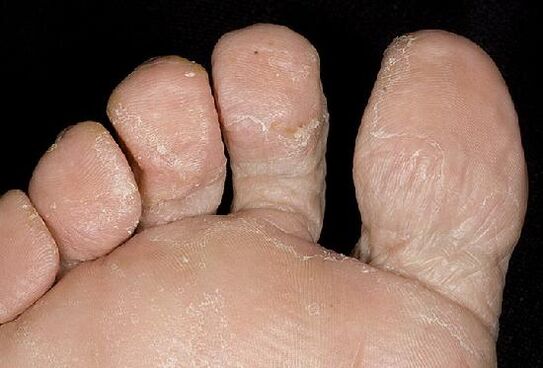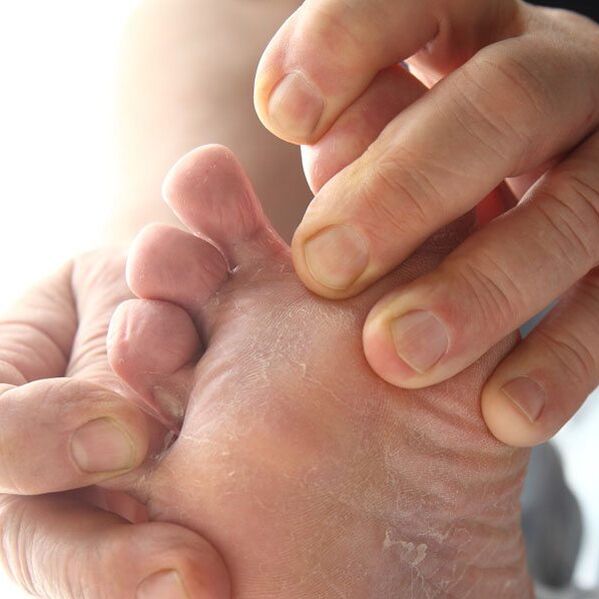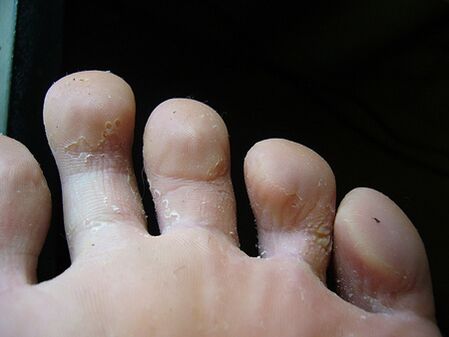
There are several dermatological diseases called fungi. The common name for such infections is "mycoses". If we talk about foot skin diseases, this is dermatomycosis. If the nail plate is affected, the doctor makes a diagnosis of "onychomycosis. "This is one of the most common pathologies in humans.
Dermatologists distinguish several types of fungal infections in humans:
- anthropophile;
- zooanthropophiles;
- candida.
The first causes infection in humans, the second - in humans and animals, and the third - like yeast.
Causes of fungal pathology

Fungal spores are found in large quantities in the soil, on surfaces, and in the general area. We go home on public transportation, go to the crib with our kids, buy groceries at the supermarket, work with people in the same room, and communicate with pets. Why do some people get sick and others don't?
There are population groups that are more susceptible to fungal diseases than others. Let's look at them in more detail:
People with reduced immunity. When the body is weakened by surgery or serious illness, it is less resistant to various infections, including fungi.Children and the elderly. Both groups are prone to pathology due to age-related characteristics. Young bodies are not strong enough, and older people already have a large number of chronic diseases that weaken the body.People with metabolic diseases caused by disorders of the thyroid, pancreas, pituitary gland and circulatory and lymphatic systems.Workers in hazardous industries involving high temperatures. In such an environment, conditions are created for the development and spread of foot fungus.Enthusiasts gym, sauna, swimming pool. In themselves, these activities are very useful, but failure to comply with the basic standards of cleanliness and hygiene regarding the disinfection of these premises leads to the appearance of problems such as fungus.
Doctors distinguish the following types of fungal diseases on the feet: athlete's foot, trichophytosis and candidiasis. It is believed that men are most often affected by the fungus, although this is a controversial statement. They are less careful about their health, so the disease progresses.
The main symptoms of the disease

Visually determining the presence of fungus on the feet is not at all difficult. If you see redness, your feet start to itch badly, even hurt, the blisters appear to burst, the skin peels, and an unpleasant odor appears, then most likely you have a fungal infection.
This can happen if you step barefoot on sports equipment, the floor of a fitness club or get an infection from a pet. After all, there are fungi that are transmitted from animals to their owners. Showering after a shift at the factory can also reward you with this distraction. Using other people's toiletries - soap, towels, washcloths is not only unhygienic, but also dangerous.
The disease can start with the skin, and then the nails and the area between the fingers are affected. This is a very serious cosmetic defect. Irregularities in the shape of the nail plate. It begins to crumble, change color, and may disappear altogether. The nail bed becomes inflamed. This is not only a cosmetic defect, it is a pathology that brings physical suffering. It even becomes painful for a person to walk.
How to identify athlete's foot
To state exactly what type of dermatomycosis is present, to clarify whether it is really a fungus or a callus, an abrasion or a corn, you need to visit a dermatologist. To clarify the diagnosis, the doctor performs a visual examination and prescribes laboratory diagnostics: skin and nail samples are taken. This allows you to clarify the type of fungus that has been detected. Only then appropriate therapy is prescribed. Each type is treated differently.
You can identify the fungus yourself using potassium permanganate. This is done like this: dilute a weak solution of potassium permanganate. Place the limb in a bowl of solution and observe. Good, healthy nails darken, but infected nails remain the same color.
Treatment is usually conservative, at home. It consists of the following mandatory items:
Take drugs orally to destroy fungal spores carried by blood and lymph.Local treatment. The use of ointments, creams, special liquids to eliminate the dermatological manifestations of the fungus. Manipulation is carried out after the pedicure and cutting of the affected nail.Hygiene and sanitation measures. It consists of disinfection of clothes and shoes. This destroys the infection spores.
Fungus is a complex, recurring infection, so therapy must be effective. After a certain time, from two weeks to a month, with careful compliance with the recommendations, recovery occurs.
















